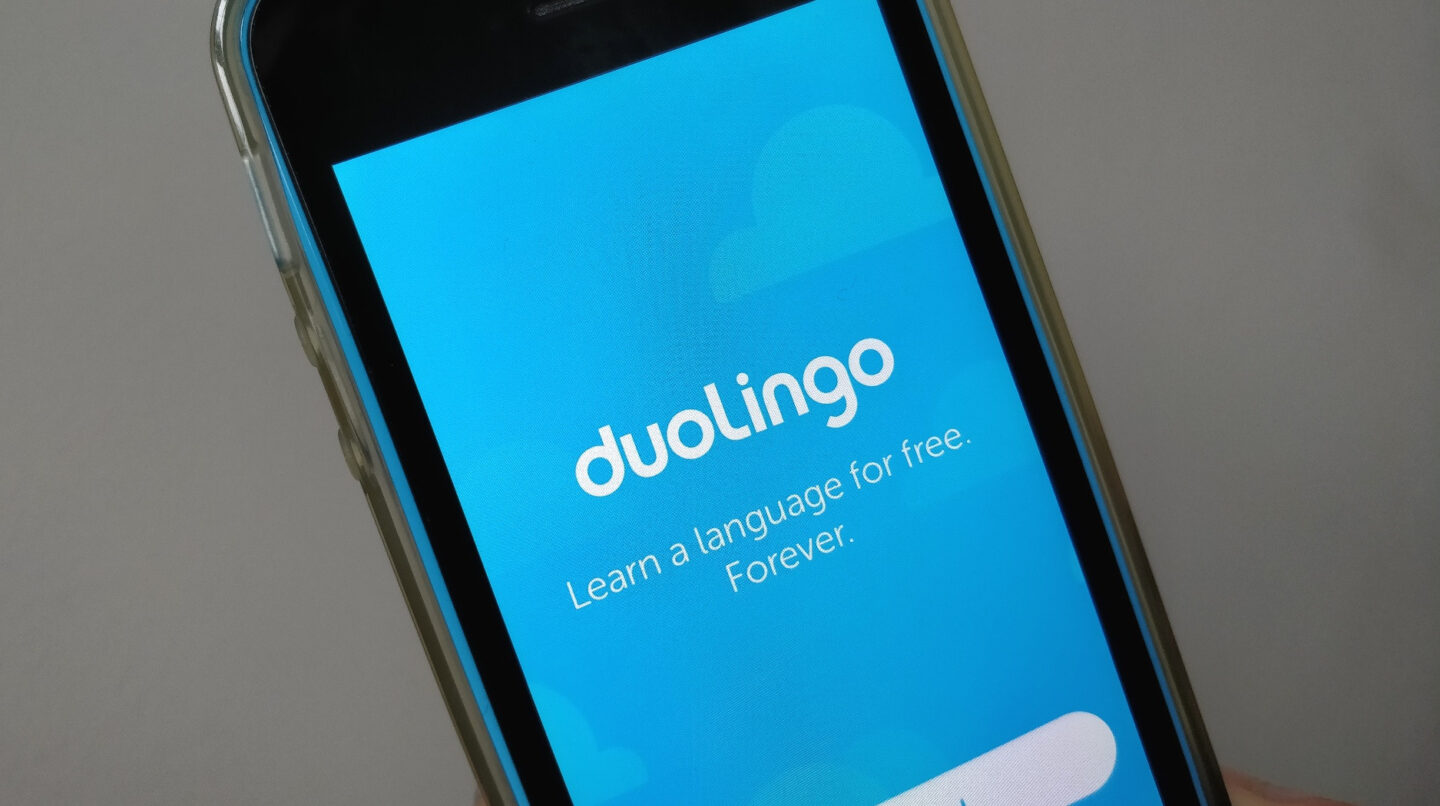“The core part of our AI strategy is to get as close as possible to having a human-to-human experience,” Duolingo AI and research head Burr Settles told VentureBeat in an interview at London’s AI Summit last month.
read more – copyright by venturebeat.com
 Duolingo, for the uninitiated, is a cross-platform app where users can learn languages for free, though they can also cough up $7 each month for a premium service that removes ads, delivers offline access, and more. Through gamification and “bite-sized” lessons, anyone can learn to read, listen, and speak in dozens of tongues.
Duolingo, for the uninitiated, is a cross-platform app where users can learn languages for free, though they can also cough up $7 each month for a premium service that removes ads, delivers offline access, and more. Through gamification and “bite-sized” lessons, anyone can learn to read, listen, and speak in dozens of tongues.
People’s reasons for learning a new language vary — perhaps it’s to boost their appeal with prospective employers, to converse with a new partner’s parents, or simply for personal fulfillment. But whatever the motivation, learning a language takes time and effort — all the more so if the learner is not immersed in the language 24/7.
Most people can’t move to another country just to boost their language skills, so companies like Duolingo have capitalized on the rise of smartphones and ubiquitous connectivity to bring lessons to users, wherever they are.
Duolingo already supports many of the world’s most common languages, including Chinese and Hindi, not to mention fictional vernaculars, such as Klingon. Earlier this week, the Pittsburgh-based company finally rolled out support for Arabic — one of the world’s most-spoken languages. Duolingo now claims some 300 million users globally and has raised north of $100 million for a valuation of around $700 million, with big-name backers including Alphabet’s CapitalG and Kleiner Perkins.
The global online language learning market was pegged at $9 billion in 2018, according to Verified Market Research, and could hit more than $20 billion by 2026. Against this backdrop, Duolingo has been investing in AI and machine learning to make lessons more engaging by automatically tailoring them to each individual — kind of the way a human tutor might.
VentureBeat sat down with Settles to get the lowdown on the company’s reliance on AI and related techniques, some of the challenges involved, and where things could go from here.
After a stint as a postdoctoral research scientist at Carnegie Mellon University, Settles joined Duolingo in 2013 as a software engineer, covering everything from the front-end to the backend. He said he chose Duolingo over bigger companies because of the potential he saw in the role.
Thank you for reading this post, don't forget to subscribe to our AI NAVIGATOR!
“My interests are at the intersection of language, AI in tech, and cognitive science,” Settles said, noting that there aren’t many jobs that fall at the crossroads of all three. “You can probably count them on your fingers,” he added.
Soon after Settles joined Duolingo, he and the team began identifying ways to transform the building blocks of Duolingo’s learning models, which had been loosely based on flash card scheduling algorithms from the ’70s. […]
read more – copyright by venturebeat.com


“The core part of our AI strategy is to get as close as possible to having a human-to-human experience,” Duolingo AI and research head Burr Settles told VentureBeat in an interview at London’s AI Summit last month.
read more – copyright by venturebeat.com
People’s reasons for learning a new language vary — perhaps it’s to boost their appeal with prospective employers, to converse with a new partner’s parents, or simply for personal fulfillment. But whatever the motivation, learning a language takes time and effort — all the more so if the learner is not immersed in the language 24/7.
Most people can’t move to another country just to boost their language skills, so companies like Duolingo have capitalized on the rise of smartphones and ubiquitous connectivity to bring lessons to users, wherever they are.
Duolingo already supports many of the world’s most common languages, including Chinese and Hindi, not to mention fictional vernaculars, such as Klingon. Earlier this week, the Pittsburgh-based company finally rolled out support for Arabic — one of the world’s most-spoken languages. Duolingo now claims some 300 million users globally and has raised north of $100 million for a valuation of around $700 million, with big-name backers including Alphabet’s CapitalG and Kleiner Perkins.
The global online language learning market was pegged at $9 billion in 2018, according to Verified Market Research, and could hit more than $20 billion by 2026. Against this backdrop, Duolingo has been investing in AI and machine learning to make lessons more engaging by automatically tailoring them to each individual — kind of the way a human tutor might.
VentureBeat sat down with Settles to get the lowdown on the company’s reliance on AI and related techniques, some of the challenges involved, and where things could go from here.
After a stint as a postdoctoral research scientist at Carnegie Mellon University, Settles joined Duolingo in 2013 as a software engineer, covering everything from the front-end to the backend. He said he chose Duolingo over bigger companies because of the potential he saw in the role.
Thank you for reading this post, don't forget to subscribe to our AI NAVIGATOR!
“My interests are at the intersection of language, AI in tech, and cognitive science,” Settles said, noting that there aren’t many jobs that fall at the crossroads of all three. “You can probably count them on your fingers,” he added.
Soon after Settles joined Duolingo, he and the team began identifying ways to transform the building blocks of Duolingo’s learning models, which had been loosely based on flash card scheduling algorithms from the ’70s. […]
read more – copyright by venturebeat.com
Share this: